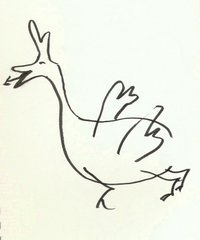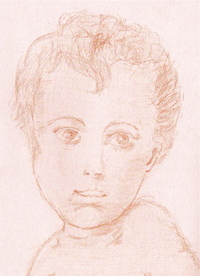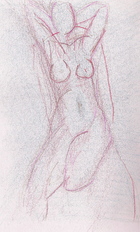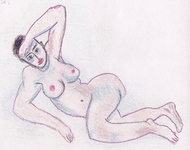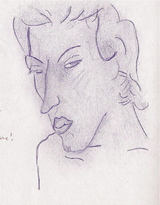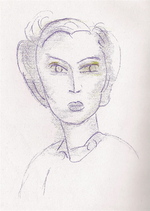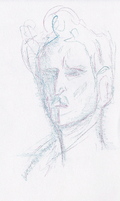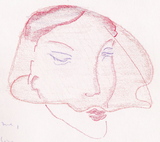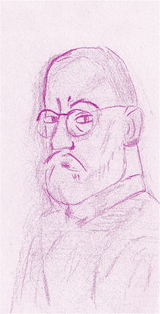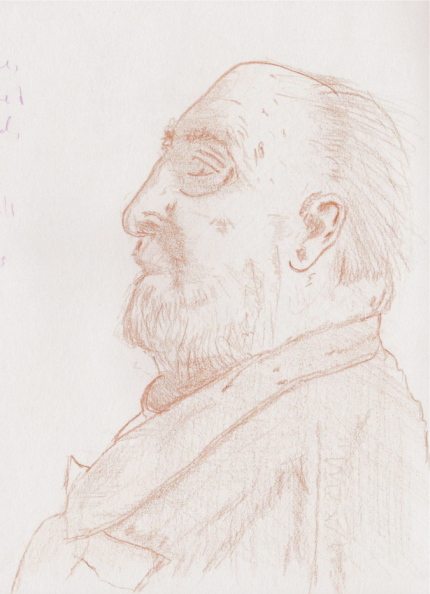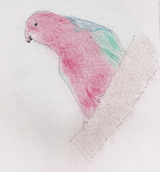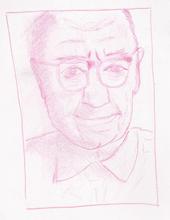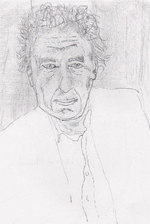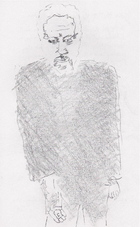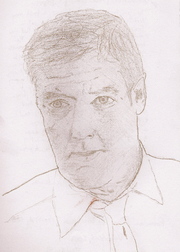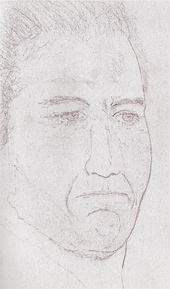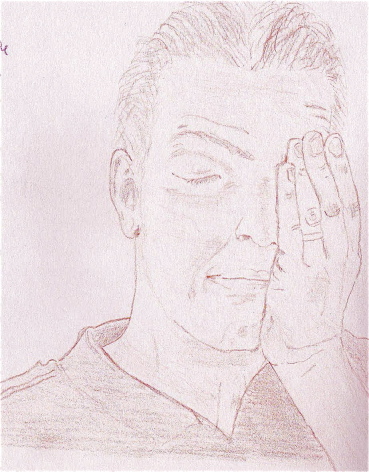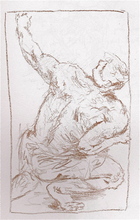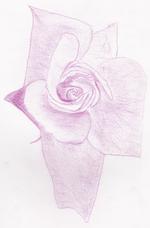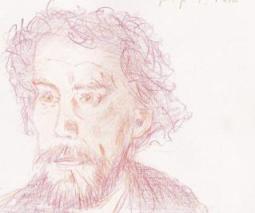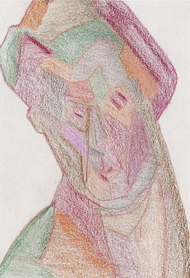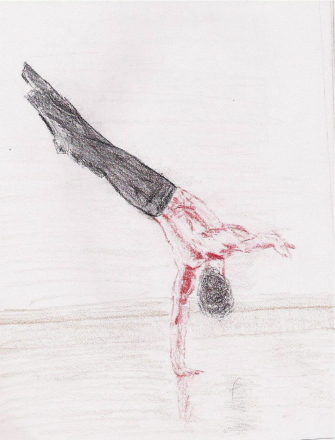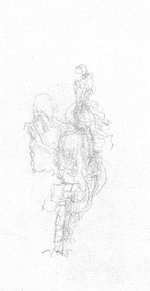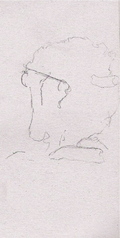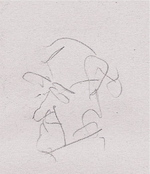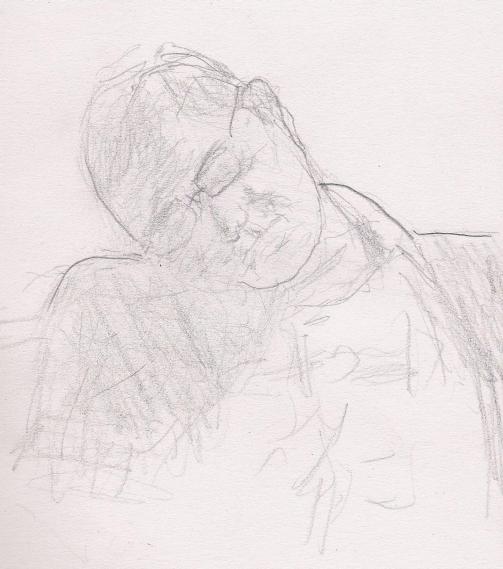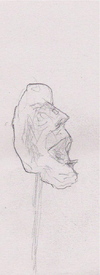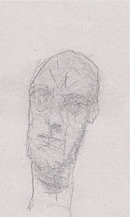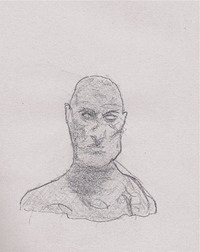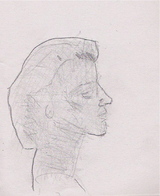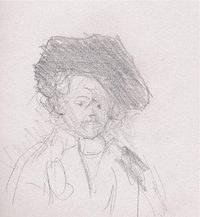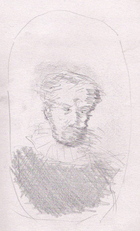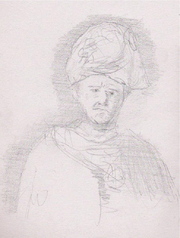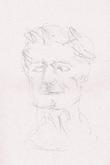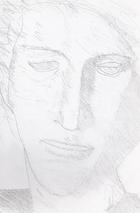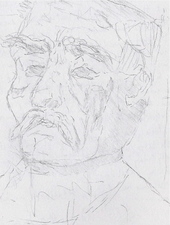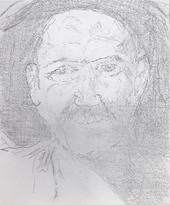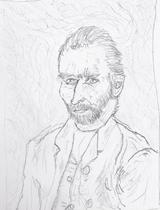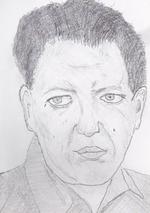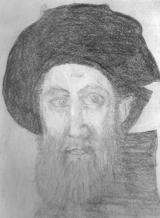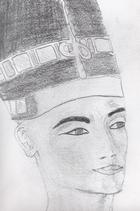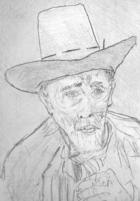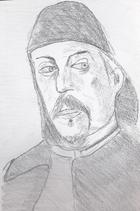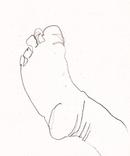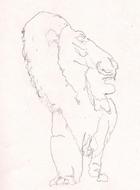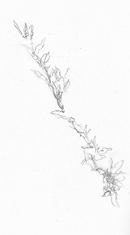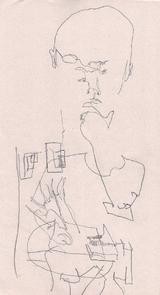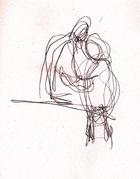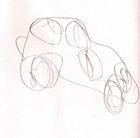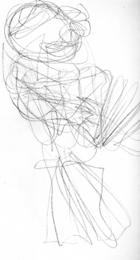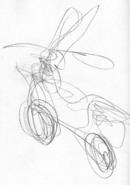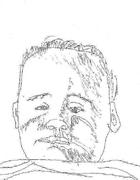Okay, Mr. Naked Beginner here has just shown you a few aspects of his evolution as a self-taught artist. Wait, wait—I’m referring to myself in the third person. That’s a sure sign of delusional megalomania. Let me start again: In the past few weeks I showed you a few aspects of my evolution as a self-taught artist. Before I turn my blogging attention to other subjects, I thought it’d be useful for me to encapsulate some of the lessons I’ve learned in my explorations.
- Fear is the king and queen of our psyches, and facing and taming our fears is our mission in this life. We might readily agree that the fear of death shapes a lot of the things we do in life. But in truth there are a thousand fears inside us, some big, some small, and they ALL shape who we are—including the fear of handling a crayon, for instance.
- It doesn’t matter what triggered your fears to begin with, in what context they arose, or who gave you the fears. It’s up to YOU to deal with them, right here, right now. And many of your fears are wholly of your own manufacturing anyway.
- The fear gamut runs from reasonable apprehension of real dangers, to irrational phobias of inexistent dangers. It doesn’t really matter how irrational, how petty some of your fears might be: they are fears nevertheless, and they handicap you in some way or other. If you’re afraid of handling a pencil or a paintbrush, that fear plays a little role in your overall emotional make-up even if you have no practical reason ever to handle a paintbrush. This doesn’t mean you SHOULD paint; it means it may be healthy for you to let go of the fear, whether you paint or not.
- It’s very easy to be unaware of your own fears. It makes perfect sense: Since it can be scary to acknowledge a fear, it’s convenient to deny you have it. “I’m not afraid of cats, I just don’t like them very much.” “I’m not afraid of learning foreign languages, I just have no need of them.” “I’m not afraid of art, I just don’t have any talent for it.”
- It’s very easy not to see, not to feel, not to observe. There’s too much information out there, and we’d go psychotic trying to absorb all of it. But in a bid to retain our sanity, we tend to stop seeing, feeling, and observing. It’s quite the balancing act, to be open to the world but not overwhelmed by it. It takes a steady center within yourself.
- Exploring, learning, and growing never stop, from the day you're born onward. You can embrace it or shy away from it. You choose!
In a few months I'm likely to come back to the subject of my artistic education. Right now I leave you with a before-and-after comparison, showing where I started as an artist and where I got after a few months of exploration.
